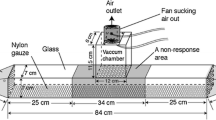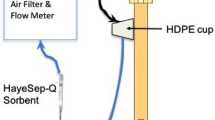Summary.
In the bumble bee, Bombus terrestris L., we investigated whether a chemical signal corresponding to the egg-marking in honey bees occurs, and whether the pattern of volatiles encodes caste-, colony- or even individual-specific information. Volatile compounds were obtained by surface extraction of individual eggs with pentane. The resulting complex mixtures were analysed by gas chromatography and mass spectrometry. Major classes of identified compounds were n-alkanes, n-alkenes and n-alkadienes comprising approximately 95% of the extracted volatile material. In addition, small amounts of methyl-branched alkanes, ethyl esters, methyl esters, wax type esters and acetates were present. Eggs produced by queens and individual workers showed significantly different compositions of volatiles. Furthermore, the volatile patterns were found to be colony-specific. Egg-odours contained all compounds identified in the Dufour’s glands and some additional components. Therefore, females very likely mark eggs with excretions of Dufour’s gland, however, other glands may also be involved.
Similar content being viewed by others
Author information
Authors and Affiliations
Additional information
Received February 1999; accepted 7 June 1999.
Rights and permissions
About this article
Cite this article
Ayasse, M., Birnbaum, J., Tengö, J. et al. Caste- and colony-specific chemical signals on eggs of the bumble bee, Bombus terrestris L. (Hymenoptera: Apidae). Chemoecology 9, 119–126 (1999). https://doi.org/10.1007/s000490050042
Published:
Issue Date:
DOI: https://doi.org/10.1007/s000490050042




